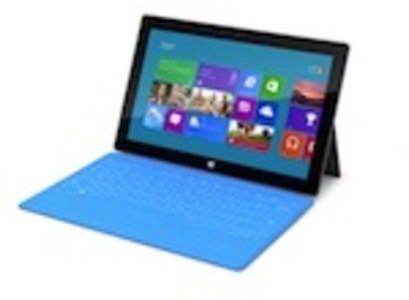Much of Microsoft’s 30-year history is a tale of bulldozing the rest of the world into doing what’s best for Redmond. Although the company has taken a gentler tack in recent years, its Surface tablet augurs a return to ruthlessness. This time, though, the erstwhile PC leader has good reason: It must betray old loyalties if it is to remain relevant to the future of personal computing.

When Microsoft developed the Surface tablet, it did so in Apple-like secrecy – outdoing Apple, for once, at that particular game. It’s been clear for years that Microsoft wanted its software on a tablet, but hardly anyone expected a tablet designed and manufactured under the company’s own brand. Even the hardware manufacturers, which have devotedly churned out machines running Windows for decades, claimed they were in the dark.
Those manufacturing partners must have been especially surprised by the revelation that Microsoft would be manufacturing its Surface tablet – or more likely, contracting the manufacturing to Pegatron, a Taiwan-based company that also manufactures Apple iPads. Surface tablets will be branded with the Microsoft name and sold through Microsoft’s site or in stores owned by Microsoft. This is exactly what Dell, HP and others didn’t want to hear from Microsoft right now.
Just as surprised are the millions of owners of devices running Windows Phone 7, the mobile operating software Microsoft launched in late 2010. When Microsoft unveiled Windows Phone 8 last week – again, to positive reviews – those early Windows Phone adopters discovered they will need to buy a new phone if they want to run Windows Phone 8. Their old OS will get an upgrade to a new version of Windows Phone 7, but it’s likely to leave out a lot of version 8’s best features.
Software developers, however, won’t have as much trouble with the move from Windows Phone 7 to version 8. Not only will apps already written for existing phones run on Windows Phone 8, but the same software kernel will be used for tablets, PCs and smartphones. Windows 8 was conceived with developers in mind, given their importance in attracting new consumers. Older consumers, however, don’t seem so important.
For PCs, Windows 8 will run on many machines that currently run Windows 7, but anyone who bought their Windows PC before June 2 will have to pay the full price for the OS, likely to be $199 if previous versions of Windows are any indication. Those who waited until after June 2 to buy a Windows PC will pay only $14.99. If you bought your Windows PC more than three weeks ago, you’re also out in the cold.
Many of the companies and consumers Microsoft is treating so cavalierly are ones who have been loyal to the company and its operating software even as PC sales have struggled. But that’s the problem: Windows revenue has been growing around 0.4% at an annual rate. At Apple, iPad revenue has been growing 132%.
To get anywhere close to Apple-like growth, Microsoft decided, it has to act more like Apple. So it retooled Windows Phone from scratch. But that meant leaving existing Windows Phone customers in the lurch. And to take on the iPad, Microsoft chose – wisely – to make its own tablet, seeing how Dell, HP and others have stumbled. But again, that meant cutting its longstanding manufacturing partners out of the process.
As in decades past, Microsoft is jerking others around. Only this time, it’s not rivals and software developers – it’s longstanding partners and loyal customers. Then again, Microsoft isn’t the same company it was a decade or so ago. It’s not the biggest player in the personal-computing industry anymore. Instead, it’s struggling to catch up with the current leader, Apple. It’s fighting to become an innovator in a software industry that’s rapidly changing. And right now, its hard work may be ready to pay off.
But Microsoft’s bid to remain relevant to the future of personal computing comes with a price, one that many people will remember from high school: If you’re going to run with the cool kids, sometimes you have to cut your uncool friends loose.

















